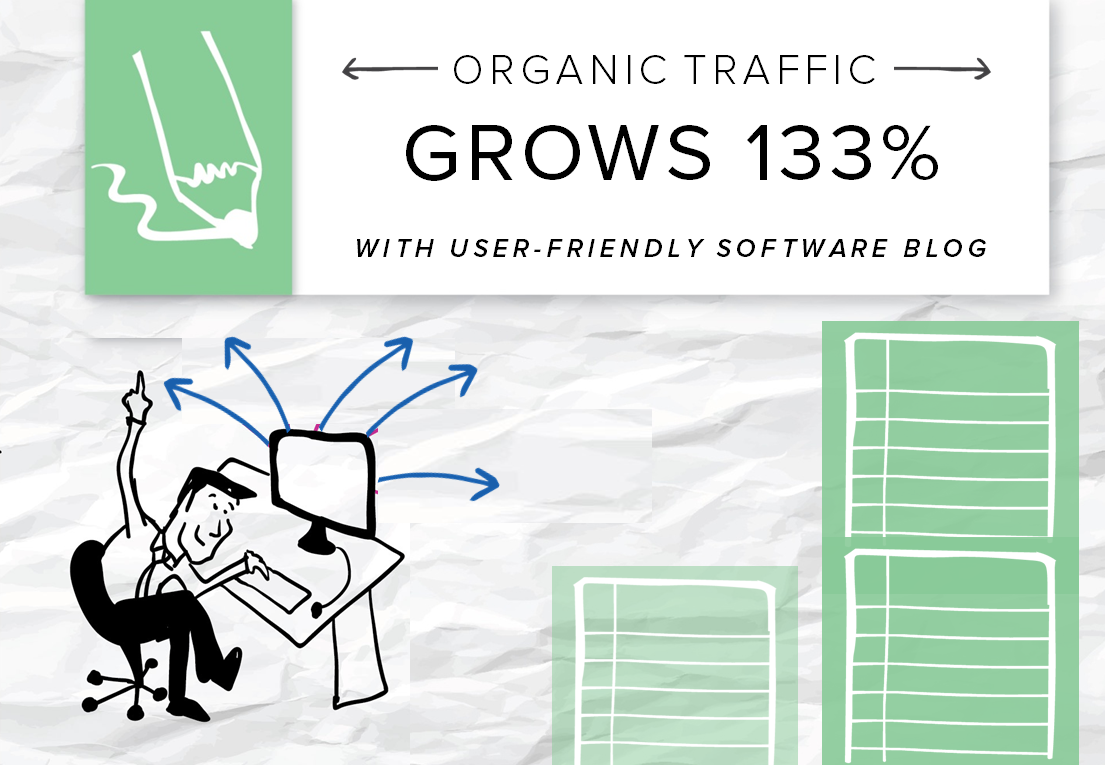Hiring a content marketing agency to write B2B tech content is exciting and nerve wracking. You’re investing time and energy, and much like hiring a new employee, there’s anticipation, as well as an understandable fear that it could turn out to be a poor match.
One in five companies Brafton works with operate in the tech and software space, so we’ve seen first hand how content fuels online marketing results. With these successes also comes the understanding that things can go wrong – and why.
Here are three issues that can arise when outsourcing content writing, and how to overcome them.
Problem 1: Asking for engineer-level expertise

Let’s all agree, the worst kind of content is that which pretends (and fails) to be technical, or is just plain incorrect. Finding a content writer to produce highly technical content that appears like an engineer wrote it is attainable – but not always realistic – particularly in the beginning of the relationship.
Sometimes clients come to Brafton expecting our writers to be innovators in their space. We won’t lie – our writers are incredibly talented and many of them have strong subject matter expertise in niche topics – but at end of the day, their talent is in writing about your field, not creating new, amazing concepts for your field. Their job is to showcase your thought leadership.
When you’re creating a content strategy, you need to think about every potential prospect. You do not want to only produce content that targets an engineer or CEO. You also need pieces that speak to other members of your audience.
The Solution: Write engaging content for your broader audience

Small business owners who might be considering a new software don’t have a technical background. A coordinator who is researching software products for his or her CTO isn’t going to be swayed by a technical white paper.
So, it’s not surprising that our clients have seen more success with list articles and tech news articles that tie major trends into our clients’ software. Not only is this the type of top-funnel content that searchers look for and social media users share, but it’s content that writers can produce without needing hands-on tech experience.
Technical content like whitepapers and guides should not be abandoned altogether. But, it isn’t the way to kick off a content strategy with a new writer. This is an appropriate content format to explore once a writer has a firm understanding of the product and has direct access to engineers and executives who can speak to it. This leads us into the second common problem…
Problem 2: Trying to hit the ground running with content
A lot of marketers who sign up for content strategies are chomping at the bit to get started. Many software companies are young, and a lot of our B2B tech clients are looking to overhaul or build up their websites. They need content to build those new domains right away. Other businesses have legacy sites that are badly in need of a facelift, and the time has finally come to add educational content to improve the user experience.
But combine technical products, new writers and tight deadlines for a new marketing strategy, and you’re bound to run into some hiccups. Put in this situation, content writers are forced to hit the ground running without a 360-degree understanding of:
-
What the product is
-
How the product works
-
Who it’s designed for, and what problems it solves for them
-
How you need it packaged
There is a learning curve with any company, let alone a tech brand that services a niche demographic with specialized products.
The solution: Start with formats that tackle your needs, and help writers get to know your business inside and out
The majority of these companies have landing pages that have not been crafted by an engineer or a business owner – not a writer. Your internal experts are undeniably the people who need to guide the landing page – but they don’t necessarily have the background in writing to create compelling copy.
The ideal kickoff would involve the writer creating product and services landing pages before ever writing a blog. By the time the writer begins creating blog content, he or she already has a much better understanding of the client’s expectations and unique value propositions, including what the company does, who the software targets and how to write to that specific audience.
In an analysis of 80+ tech clients, we’ve discovered 33 percent of all backlinks direct to product and services landing pages. Learn more about the importance of product and service pages here.
Problem 3: Communication breakdown
You don’t want to start the relationship on rocky footing, so you might not provide in-depth edits on the first few pieces of content you receive. Maybe you think, “the writer will get it right after a few stabs,” so you wait until you receive a handful of drafts to review altogether.
Reaching a smooth workflow in the beginning can make or break a relationship. This can be at the fault of any – or all – of the parties involved, but cultivating strong communication is what’s going to give a writer more confidence and give a client more confidence. It’s simple.
Solution: The best approach is very responsive, very thorough (to the point of exhaustive) edits.
It might feel like nitpicking, but providing both positive and negative feedback that’s extremely specific is what’s going to help a writer understand how they can improve. Once the relationship has been going on for several months, feedback can be more relaxed in nature.
Everyone needs to earnestly commit to being on the same page. In the beginning of a contract, everyone needs to make sure they’re all on the same page – every communication should involve everyone.
Learn more about Brafton’s approach to B2B content writing here:





